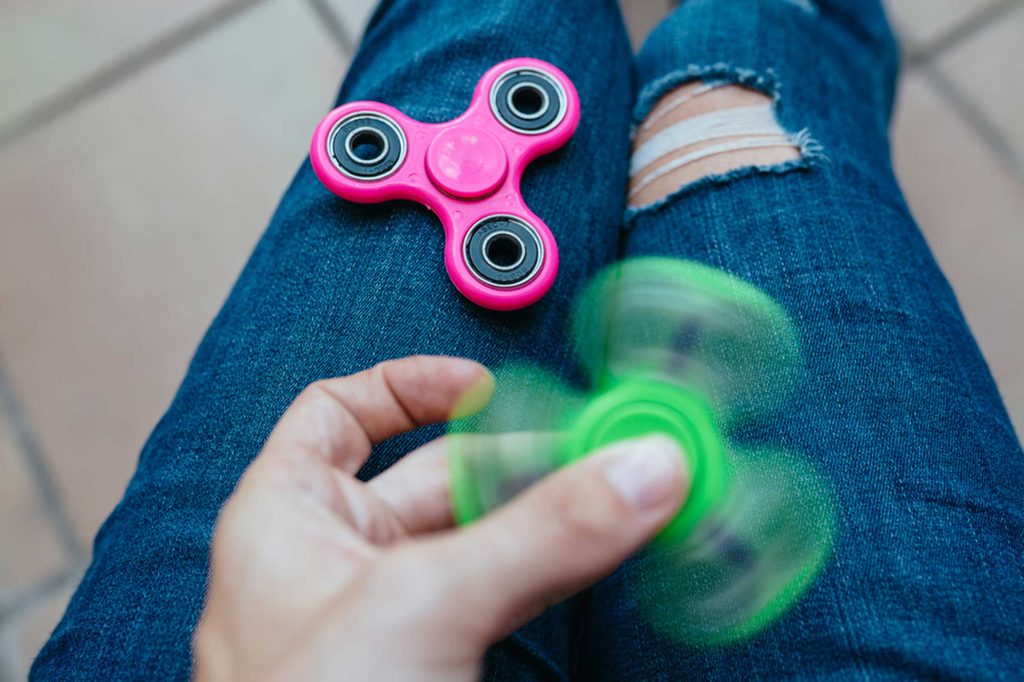Those Trendy Fidget Spinners Are Giving Some Kids (and Their Teachers) the Fidgets
Updated: May 13, 2021
The whirling gizmos are all the rage in classrooms around the country. But are they really improving learning for kids? Child experts weigh in.

If you don’t know what a fidget spinner is, then you probably don’t have children—or any teacher-friends entertaining you with tales about what goes on in their classrooms. A fidget spinner is a flat, triangle-shaped piece of hard plastic or metal with a bearing in the center that the user spins between two fingers. Its purported inventor, Catherine Hettinger, came up with the idea as a device to distract young children from mischievous behavior by providing them with a soothing toy to play with. It first debuted in 1993 but didn’t take off until recently, possibly in response to this study and others like it that demonstrate that movement while in class might actually help kids to learn, at least kids with Attention-Deficit/Hyperactivity Disorder (ADHD).
“Conventional teaching and treatment methods demand that ADHD children remain still, and the ability to focus on the lesson is lost in the child’s struggle to focus on not squirming or fidgeting,” said the study’s author, Dustin Sarver, MD, a pediatrics professor at the University of Mississippi Medical Center and researcher at the Center for Advancement of Youth. “For the majority of kids with ADHD, the more they moved, the better their working memory performance.” In addition, being allowed to move increased their cognitive arousal and alertness.
The problem is that although some 11 percent of all children have been diagnosed with ADHD since 2011, according to the Centers for Disease Control and Prevention, other children who do not have ADHD will engage in “monkey-see-monkey-do” behavior; they reach for the toys, even though they don’t need them. With an estimated two to three children with ADHD in every classroom, that quickly adds up to a lot of children asking for—and getting—their own fidget toys. Doug Roberts, an elementary school teacher in Oregon and author of the well-reviewed book, He’s The Weird Teacher, acknowledges that “Yes, some, a few, a couple of students need them, sure. But most of my kids are just using them as toys.”
Not all children benefit from playing with fidget toys. Dr. Sarver’s study suggests that children without ADHD actually do worse in school when they move more. Robertson also notes that the presence of fidget toys can inspire fights and theft, plus “the soft hum the spinners make becomes nails-on-chalkboard irritating at some point.”
That irritation isn’t confined to fidget spinners. Robertson points out that he could just as well be talking about a mechanical pencil, snap bracelets, or Tamogachis, which like fidget toys, could be viewed as providing a rich supply of “teachable moments” if a teacher is willing to think creatively.
Ultimately, Robertson says, the “fidget spinner isn’t the distraction. …Getting obsessed and stressed by a fad that’ll be over before the school year ends is.”
